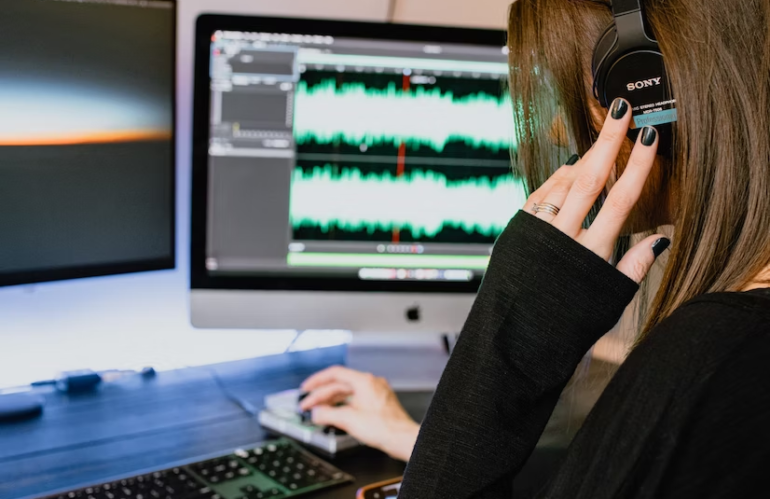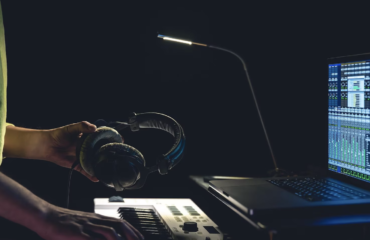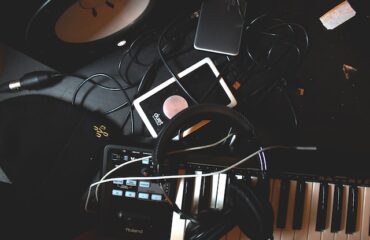FL Studio, formerly known as FruityLoops, is a popular digital audio workstation (DAW) used by music producers and beatmakers worldwide. With its user-friendly interface and powerful features, FL Studio has become a go-to software for creating beats and producing music. In this article, we will explore the step-by-step process of making beats using FL Studio, from setting up your project to arranging your tracks. Whether you’re a beginner or an experienced producer, this detailed guide will help you navigate through FL Studio and unleash your creativity.
Before diving into beat-making, it’s essential to set up your project correctly. Here are the initial steps to follow:
- Install FL Studio: Download and install the latest version of FL Studio from the official website;
- Launch FL Studio: Once installed, open FL Studio and familiarize yourself with the interface;
- Create a New Project: Click on “File” and select “New” to create a new project. Set the project’s tempo, time signature, and other initial settings as per your preference.
Understanding the Interface
FL Studio has a comprehensive interface with multiple windows and panels. Familiarizing yourself with the different sections will make your beat-making process more efficient. Here’s a breakdown of the main areas:
- Channel Rack: The Channel Rack is where you organize and sequence your sounds, drums, and instruments;
- Piano Roll: The Piano Roll is used to compose melodies and edit individual notes;
- Mixer: The Mixer allows you to control the volume, panning, and effects of each track;
- Playlist: The Playlist is where you arrange your patterns and build your beat structure.
Detailed Interface Description
The following table provides a detailed description of the main areas of the FL Studio interface:
| Interface Area | Description |
|---|---|
| Channel Rack | This is where you create and arrange patterns for your sounds, drums, and instruments. It displays the name of each channel and allows you to trigger them. You can also apply effects and make adjustments to each channel. |
| Piano Roll | The Piano Roll is used to compose melodies and edit individual notes. It displays a grid representing the piano keys and allows you to draw or input notes using a MIDI controller. |
| Mixer | The Mixer provides control over the volume, panning, and effects of each track. It allows you to adjust the audio levels, apply EQ, compression, and other effects to shape the sound of each channel. |
| Playlist | The Playlist is where you arrange your patterns and build the structure of your beat. You can drag and drop patterns from the Channel Rack onto the Playlist to arrange your music. It also allows you to automate volume, panning, and other parameters over time. |
Creating Drum Patterns
Drums are the foundation of most beats. FL Studio offers various tools and options to create drum patterns. Follow these steps to get started:
- Choose a Drum Kit: Browse through FL Studio’s built-in drum kits or import your own samples;
- Create Patterns in the Channel Rack: Use the step sequencer or draw notes directly in the Piano Roll to create drum patterns;
- Layering and Variation: Experiment with layering different drum sounds and adding variations to create dynamic and interesting drum patterns.
Detailed Steps for Creating Drum Patterns
- Select a Channel in the Channel Rack;
- Choose a drum sound from the built-in library or import your own sample;
- In the step sequencer, program the drum pattern by clicking on the steps to activate or deactivate the sound for each beat;
- Use the Piano Roll to fine-tune the drum pattern, adjust the velocity of each hit, or add rolls and fills;
- Experiment with different drum samples and layer them to create a fuller and more textured sound;
- Add variations to the drum pattern by muting or activating certain elements at different sections of the beat;
- Use FL Studio’s quantization options to align the drum hits to the desired timing and grid.
Building Melodies and Chords
Once you have a solid drum pattern, it’s time to add melodies and chords to your beat. Here’s how to do it:
- Select an Instrument: FL Studio offers a wide range of virtual instruments. Choose an instrument that suits the genre and style of your beat;
- Compose in the Piano Roll: Open the Piano Roll for the selected instrument and start composing melodies and chords. Experiment with different scales and chord progressions to find the right sound;
- Quantization and Editing: Use FL Studio’s quantization features to align notes to the grid and edit individual notes to refine your melodies and chords.
Detailed Steps for Building Melodies and Chords
- Select an instrument or plugin from the Channel Rack to use as the sound source for your melodies and chords;
- Open the Piano Roll for the selected instrument;
- Use a MIDI controller or your computer keyboard to input notes directly into the Piano Roll, or draw them in manually;
- Experiment with different melodies and chord progressions to create the desired musical expression;
- Adjust the length, velocity, and timing of individual notes in the Piano Roll to fine-tune the performance;
- Utilize FL Studio’s quantization features to align the notes to the desired timing and grid, ensuring a tight and cohesive feel;
- Add variations and embellishments to the melodies and chords to create interest and movement in the music.
Arranging and Mixing
Once you have your drum patterns, melodies, and chords, it’s time to arrange your beat and mix it to perfection. Follow these steps:
- Use the Playlist: Drag and drop your patterns onto the Playlist to arrange your beat’s structure. Experiment with different arrangements and transitions;
- Automation: Add automation to control parameters such as volume, panning, and effects over time to add movement and interest to your beat;
- Mixing: Use the Mixer to adjust the levels, add effects, and create a balanced mix. Pay attention to EQ, compression, and other processing techniques to enhance the sound.
Detailed Steps for Arranging and Mixing
- Open the Playlist and create a new pattern or drag and drop your existing patterns onto the Playlist to build the structure of your beat;
- Experiment with different arrangements and transitions to create a cohesive and dynamic flow;
- Add automation clips to control parameters such as volume, panning, and effects over time. This allows for more expressive and evolving soundscapes;
- Utilize FL Studio’s Mixer to adjust the volume, panning, and effects of each track;
- Pay attention to the frequency balance of your mix by using EQ to shape the tonal characteristics of individual tracks;
- Apply compression to control the dynamic range and ensure a balanced and controlled sound;
- Experiment with other effects such as reverb, delay, and modulation to add depth and space to your mix;
- Continuously listen and make adjustments to achieve the desired balance and clarity in your mix.
Finalizing and Exporting
Once you’re satisfied with your beat, it’s time to finalize and export it. Here’s how to do it:
- Mastering: Apply mastering techniques to enhance the overall sound and make your beat ready for distribution;
- Exporting: Select the desired audio format, quality, and destination for exporting your beat. FL Studio allows you to export your beat as a WAV, MP3, or other common audio formats;
- Save your Project: Always save your FL Studio project file, so you can make changes and modifications in the future if needed.
Detailed Steps for Finalizing and Exporting
- Use mastering techniques to enhance the overall sound of your beat. This may include adjusting the final EQ, compression, stereo widening, and limiting to achieve a polished and professional sound;
- In FL Studio, go to the “File” menu and select “Export” or use the shortcut “Ctrl+Shift+R” to open the Export Settings window;
- Choose the desired audio format for your export, such as WAV or MP3;
- Set the export quality and bit depth according to your preferences or the requirements of the intended distribution platform;
- Specify the destination folder where you want to save the exported file;
- Click on the “Start” button to initiate the export process;
- Save your FL Studio project file (.flp) for future reference and possible modifications.
Conclusion
FL Studio is a powerful tool for creating beats and producing music. By following the step-by-step process outlined in this detailed guide, you can unleash your creativity and make impressive beats using FL Studio. Remember to experiment, practice, and keep refining your skills to develop your unique sound and style. So, fire up FL Studio, dive in, and let your musical ideas come to life!
FAQ
Yes, FL Studio allows you to import and use your own samples for drums, melodies, and other sounds.
FL Studio provides a wide range of built-in effects. Simply add them to your mixer tracks and adjust the settings according to your needs.
Yes, FL Studio offers features like project sharing and stem exporting, which allow you to collaborate with other producers seamlessly.
Practice regularly, experiment with different techniques and styles, and explore tutorials and resources available online to improve your beat-making skills.






